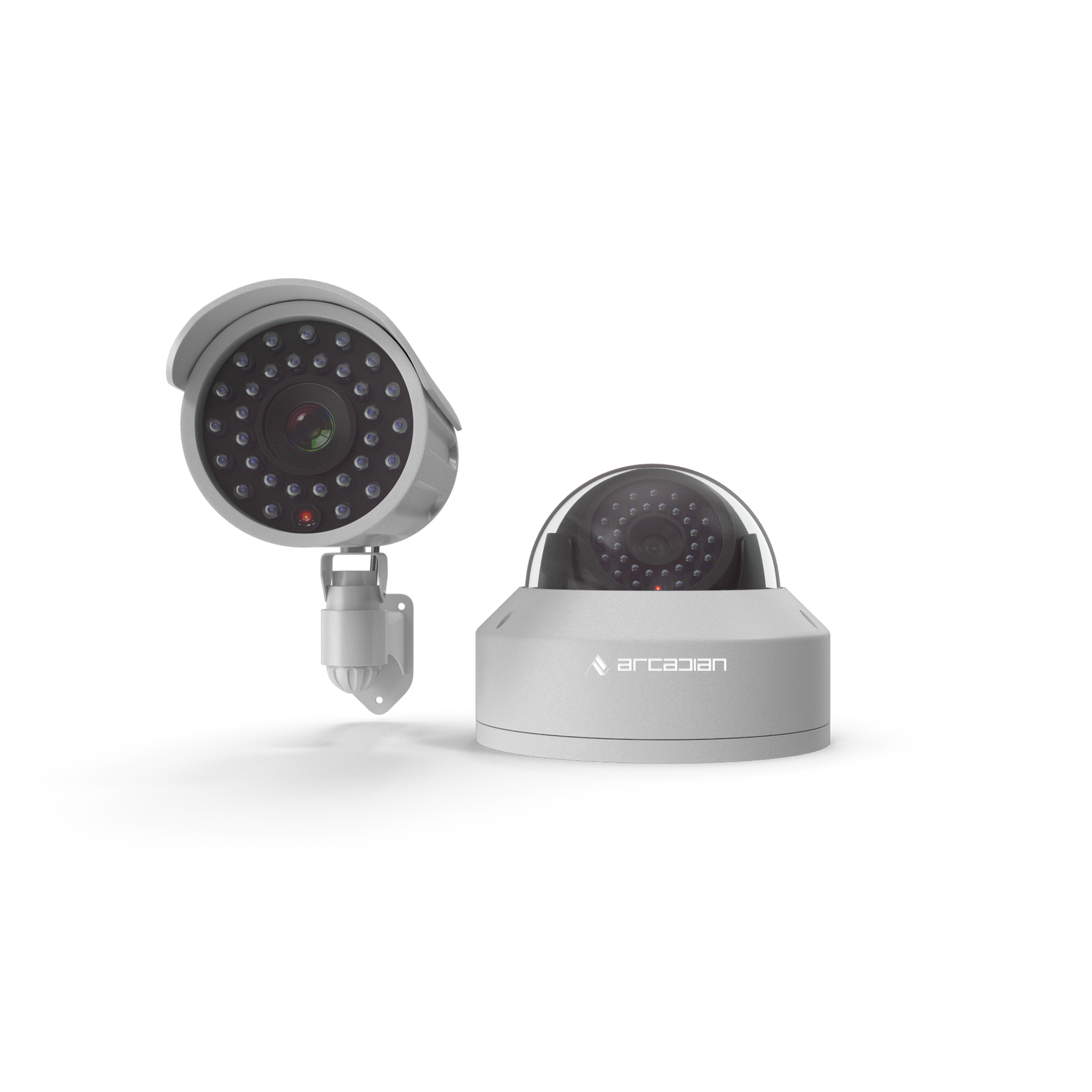Misconfigured Access Systems: The Silent Breach No One Talks About
Researchers uncovered more than 49,000 exposed building access systems worldwide, proving that outdated on-prem models are silent liabilities. Here’s why they fail — and what to do instead.

- Introduction
- Quick Summary / Key Takeaways
- Background & Relevance
- Why On-Prem Access Systems Are Almost Always Misconfigured
- Reverse Psychology: The Myth of On-Prem Safety
- Real-World Breaches & Incident Table
- Competitor Analysis: Who’s Failing and Why
- How ArcadianAI + Ranger Solve the Misconfiguration Crisis
- Use Cases Across Industries
- Expanded FAQ
- Conclusion & CTA
- Security Glossary (2025 Edition)
Introduction
In early 2025, researchers scanning the internet uncovered over 49,000 misconfigured and publicly exposed building access management systems. These weren’t obscure lab environments — they included corporate offices, hospitals, schools, retail chains, and even government buildings, all broadcasting their control panels to the public internet.
ArcadianAI views this discovery as more than a headline. It’s proof that on-premise access control systems are fundamentally flawed: misconfigured, rarely updated, and impossible to secure consistently at scale.
Competitors like Genetec, Milestone, or legacy Lenel controllers continue to push enterprises into fragmented deployments where every update is manual, every integration introduces complexity, and every misconfiguration is a door waiting to be opened.
The hidden truth? Executives believe their access systems are quietly keeping buildings secure — when in fact they may be the easiest way inside.
Quick Summary / Key Takeaways
-
49,000+ misconfigured access systems exposed in 2025
-
On-premise deployments rarely get timely patches
-
Misconfigurations = invisible doors for attackers
-
False confidence is the real executive risk
-
ArcadianAI + Ranger deliver cloud-native resilience
Background & Relevance
The Rising Exposure Problem
-
Censys Research (2025): More than 49,000 building access systems exposed to the internet, with thousands tied to critical infrastructure.
-
IBM X-Force Threat Intelligence Index (2024): 61% of breaches originate from misconfigurations or weak credentials.
-
FBI IC3 Report (2024): U.S. businesses reported $12.5B in losses linked to infrastructure exploitation, much of it rooted in exposed systems.
Why It Matters Now
Physical access systems have converged with IT. What used to be “just facilities” now connects to corporate networks, HR databases, and video management platforms. A misconfigured door controller isn’t just a door problem — it’s a full enterprise breach vector.
Why On-Prem Access Systems Are Almost Always Misconfigured
1. Outdated Firmware and Manual Updates
On-prem controllers depend on IT or integrators to manually apply patches. Enterprises often lag 6–18 months behind vendor releases.
-
By then, exploits are public.
-
Attackers use Shodan to locate unpatched systems.
2. Default Credentials & Weak Passwords
Thousands of access controllers still use default logins like admin/admin. Some integrators reuse the same credentials across multiple clients.
-
One compromise = many breached sites.
3. Poor Network Segmentation
Controllers are frequently placed on corporate LANs without segmentation. Misconfigured firewalls expose them directly to the internet.
-
Once inside, attackers pivot to HR or finance systems.
4. Broken Integrations
HR sync errors, camera-access tie-ins, and visitor systems often create misaligned policies.
-
Example: A misconfigured HR integration that failed to revoke access for terminated employees.
5. Lack of Central Visibility
With dozens or hundreds of controllers across sites, IT teams simply can’t detect misconfigurations.
-
Executives assume “it’s handled,” while silent vulnerabilities pile up.
Reverse Psychology: The Myth of On-Prem Safety
Executives regularly tell themselves:
-
“Our access control is air-gapped.” → Until an integrator connects it for remote support.
-
“We trust our vendor.” → Until you realize their patch schedule runs months behind attackers.
-
“We passed an audit.” → Until the auditor never checked system exposure.
The most dangerous misconfiguration is believing you don’t have one.
Real-World Breaches & Incident Table
| Year | Industry | System/Brand | Misconfiguration | Outcome | Estimated Loss |
|---|---|---|---|---|---|
| 2025 | Manufacturing (Canada) | Lenel | Default credentials exposed | Badge data + PII stolen | $3.2M fines + downtime |
| 2024 | Healthcare (U.S.) | On-prem HID controllers | Misconfigured cabinet access | Unauthorized entry to drug storage | $5M HIPAA settlement |
| 2024 | Retail chain (U.S.) | Genetec integration | 200+ store portals exposed via Shodan | Store theft + reputational loss | $12M shrink impact |
| 2023 | Education (Europe) | Axis + Milestone | VLAN misconfigured | Attackers remotely unlocked school doors | Campus lockdown |
| 2023 | Government building (Asia) | Legacy proprietary | Outdated firmware, no patch | Controller exploited → insider access | Classified data loss |
Competitor Analysis: Who’s Failing and Why
| Competitor | Model | Strengths | Weaknesses |
|---|---|---|---|
| Genetec | On-prem + hybrid VMS | Trusted enterprise brand | Heavy IT overhead, patch lag, integration risk |
| Milestone | On-prem VMS | Flexible partner ecosystem | Lacks native cloud, slow patch adoption |
| Verkada | Cloud-native | Marketing simplicity, integrated hardware | Vendor lock-in, limited hardware choice, data leaks (2021) |
| Eagle Eye Networks | Cloud VSaaS | Camera-agnostic storage | Integration gaps, weaker enterprise access features |
| Rhombus | Cloud-native | Modern design, ease of use | Still hardware-tied, weaker compliance for large orgs |
ArcadianAI Difference:
-
Cloud-native auto-patching — zero IT delays.
-
AI validation — Ranger finds risky configs instantly.
-
Camera + access agnostic — unlike lock-in competitors.
-
Compliance-ready — HIPAA, GDPR, NDAA validation built in.
How ArcadianAI + Ranger Solve the Misconfiguration Crisis
-
Auto-Patching — Always updated, unlike manual patch cycles.
-
AI Validation — Detects exposed ports, weak settings, bad integrations.
-
Credential Rotation — No static admin passwords.
-
Unified Visibility — One dashboard for all sites.
-
Camera & Access Agnostic — Works with Axis, Hanwha, HID, Lenel, etc.
ROI Example:
A 50-site retail chain reduced misconfigurations by 92% in Year 1 after adopting ArcadianAI, preventing at least $1.8M in breach-related losses.
Use Cases Across Industries
Retail
Risk: Booster crews exploit exposed store portals.
Solution: Ranger detects and blocks risky configs before exposure.
Logistics
Risk: Badge systems at distribution centers exposed to internet.
Solution: Centralized Ranger visibility across warehouses.
Healthcare
Risk: Misconfigured locks expose drug cabinets + patient records.
Solution: Ranger enforces HIPAA-ready settings continuously.
Education
Risk: School access controllers misconfigured, doors remotely unlocked.
Solution: Multi-site dashboard across districts, student safety protected.
Manufacturing
Risk: SCADA tied to access systems, misaligned configs expose plant.
Solution: Ranger validates zero-trust rules across OT/IT.
Expanded FAQ
Q1. How dangerous is a misconfigured access system?
Equivalent to leaving your building keys on the front step — only now, anyone in the world can pick them up.
Q2. Why are on-premise deployments more vulnerable?
Because they rely on manual patching and siloed IT teams, while attackers automate discovery.
Q3. Can ArcadianAI integrate with existing HID, Lenel, or Axis controllers?
Yes — unlike Verkada lock-in, ArcadianAI is hardware-agnostic.
Q4. What’s the ROI of preventing misconfigurations?
Preventing even one breach ($1–5M average cost) can deliver >30× ROI.
Q5. Do firewalls or VPNs solve this?
No. Misrouted configs still expose systems externally, even behind firewalls.
Q6. Which industries are most at risk?
Retail, logistics, healthcare, education, and manufacturing — especially multi-site operators.
Q7. How does Ranger ensure compliance?
By continuously validating configurations against NDAA, HIPAA, GDPR, and ISO 27001 standards.
Conclusion & CTA
The 49,000 exposed access systems revealed in 2025 represent just the tip of the iceberg. On-premise deployments will always drift into misconfiguration because humans can’t keep up with the speed and complexity of modern attacks.
ArcadianAI + Ranger eliminate this fragility with cloud-native resilience, AI-driven validation, and continuous compliance enforcement.
🔒 Stop silent breaches before they stop you.
Get Demo – ArcadianAI
Security Glossary (2025 Edition)
-
ACS (Access Control System) — Technology that regulates entry using badges, biometrics, or codes.
-
AI Configuration Validation — Automated scanning for unsafe system settings.
-
BACnet — A building automation protocol, often tied to access systems.
-
Cloud-Native — Designed for cloud scale with continuous updates.
-
Credential Rotation — Scheduled credential resets to reduce breach risk.
-
Default Credentials — Factory-set usernames/passwords, often unchanged.
-
Exposed System — A controller reachable from the internet without safeguards.
-
HID — Leading provider of access control hardware and cards.
-
Lenel — Legacy on-prem access control brand often exploited.
-
MFA (Multi-Factor Authentication) — Identity verification with multiple factors.
-
Milestone — On-prem VMS competitor, flexible but patch-dependent.
-
NVR (Network Video Recorder) — On-prem video storage device tied to access.
-
OSDP (Open Supervised Device Protocol) — Secure communication standard for access devices.
-
PII (Personally Identifiable Information) — Sensitive identity data (badge IDs, names).
-
Shodan — Search engine indexing internet-exposed devices.
-
Verkada — Cloud-native access/camera vendor with lock-in risks.
-
VSaaS (Video Surveillance as a Service) — Cloud-hosted video monitoring.
-
Zero Trust — Security model assuming no user/device is inherently trusted.

Security is like insurance—until you need it, you don’t think about it.
But when something goes wrong? Break-ins, theft, liability claims—suddenly, it’s all you think about.
ArcadianAI upgrades your security to the AI era—no new hardware, no sky-high costs, just smart protection that works.
→ Stop security incidents before they happen
→ Cut security costs without cutting corners
→ Run your business without the worry
Because the best security isn’t reactive—it’s proactive.







